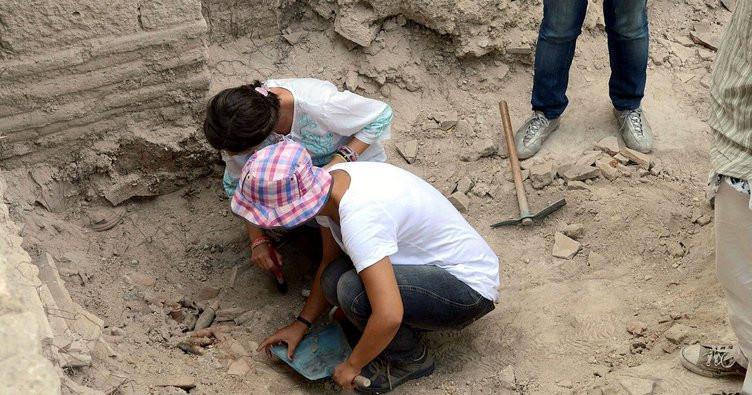
Within the scope of Bathonea Antique Harbor excavation works, which started 12 years ago in Istanbul’s Avcılar neighborhood, new and significant findings have come to light, according to the head of the excavations, Associate Professor Şengül Aydıngün from Kocaeli University.
At a recent online meeting, organized by the Avcılar Municipality, Aydıngün said that Avcılar was located in a very rich geography around Küçükçekmece Lake, Marmara Sea and rivers.
“The most important thing that gives life to Avcılar is Küçükçekmece Lake and its shores. Avcılar was established in one of the most beautiful regions where sea, lake and river meet. This region has a very long history. Evidence of the past that goes back to 800,000 years ago was discovered in the past excavations in Yarımburgaz Cave, just north of the lake,” she said.
Aydıngün said that the agricultural stone tools they found during their studies in the Yarimburgaz Cave in the region and Firuzköy district in Avcılar showed that the region was the first agricultural area in Istanbul.
She said that they found 9,000-year-old agricultural tools as well as raw materials from which tools were produced in the region.
Aydıngün said that while investigating findings from 5,000 years ago in the excavations, traces of architectural texture began to emerge after cleaning a sand layer in 2013.
“In our studies, we found a group of materials related to the Hittites living in Central Anatolia, which did not belong to the region. We discovered Hittite materials here. We can see the Imrali Island opposite Avcılar and the Anatolian lands behind it. Behind İmralı is the region defined as Masa and Asuwa by the Hittites. The Hittites came to this region, fought, and when they won the fight, they offered gifts to their gods,” she said.
“Among our findings, we also have things related to Mycenaean, who came from the south of Greece,” she added.
Providing further information about the excavations, Aydıngün said that they reached the traces of Ottoman Byzantine, Greek and Roman from the top to the bottom of the excavation area and then reached an area covered by the sea layer.
“As we removed the sandy layer, we found a settlement that has the traces of the Hittites, Cypriots and Mycenaean civilizations. We will unearth this settlement in future excavations,” she added.
[HH] Vikings in Bathonea
Aydıngün emphasized that the coastline of Küçükçekmece Lake was significantly used in maritime trade in the ancient period because it was more sheltered.
She stated that some of the findings they found during the Bathonea excavations bear the traces of the Avars’ attacks in Istanbul and that they found over 1,000 terracotta medicine bottles as well as the materials and plant extracts used in their production.
She also stated that a team of approximately 100 people, including a Polish team, revealed a serious Viking relationship with Bathonea during the excavations there.